Basic principles
To make the cooking process in the kitchen as comfortable as possible, follow the basic recommendations:
- The width of the entrance doors should be at least 80 cm (preferably 90). There should be no obstacles in the way of their opening.
- The distance between the two vertices of the working triangle (sink, refrigerator, stove) is not less than 110-120 cm and not more than 2.7 m. A convenient passage in the kitchen is 90 cm, 110 cm – if several people periodically collide.
- For ease of movement and opening doors, the width between two rows of furniture with a parallel or U-shaped layout is set at least 120 and not more than 180.
- Between the wall and the dining table in the kitchen for comfortable seating, leave 80 cm, for seating and comfortable passage behind the back – 110 cm.
- The width of the dining area for one person is 60, that is, for a family of 4, a rectangular table 120 * 60 is needed.
- The minimum surface on both sides of the sink is 45-60 centimeters, stoves – 30-45.
- Sufficient space for cutting food is 1 m. Safe distance from the stove to the hood is 75-85 (gas), 65-75 (electric).
- The standard height of the kitchen countertop is 85 cm, suitable for people 150-170 tall. Choose the height according to your height: low (75-85) or high (85-100), the correct work surface is slightly below the waist.
- The height of the upper cabinet above the floor cabinet is 45-60 centimeters, also depending on height. You should be able to comfortably reach the bottom shelf without a stool.
Tip: To determine the correct height of the countertop, bend your arms at the elbows parallel to the floor. Measure the distance from your palm to the floor and subtract 15 – this will be the desired result for the kitchen.
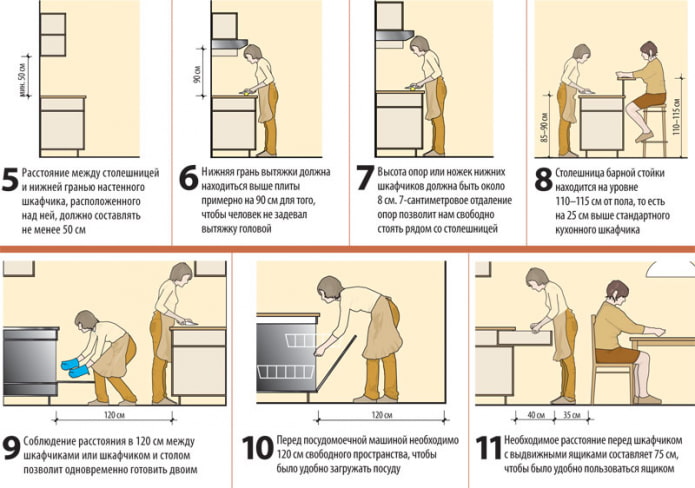

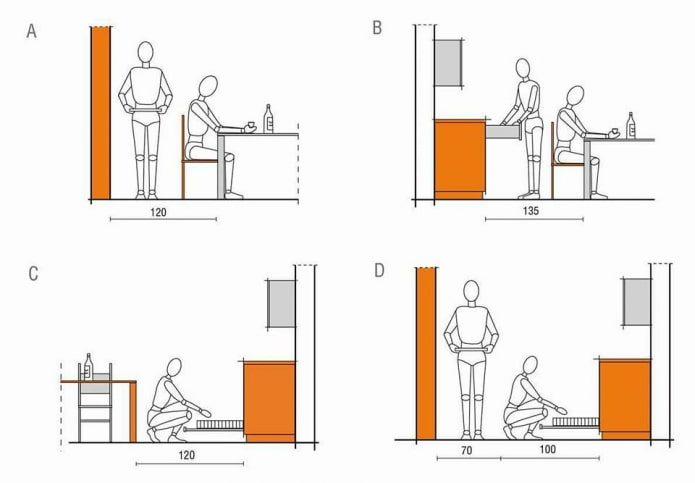
Arrangement rules furniture
When planning a kitchen, don’t reinvent the wheel, use the effective and working rule of the working triangle. There are 5 main options for placing kitchen furniture, each of which places the triangle differently.
Linear. A straight kitchen set is not the best example of ergonomics. A single-line arrangement will not allow you to conveniently distribute work areas, so it is better to add an island or a bar counter and move one of the vertices to the side. But if the area of the room allows only a single-row layout (for example, in a small Khrushchev-era apartment), place the sink in the center, leaving enough distance from it to the stove and refrigerator.
Double-row. Often used in narrow kitchens and is considered quite convenient. An ergonomic example of placement is a stove and sink opposite the refrigerator. With this layout, you won’t have to constantly spin around the axis.
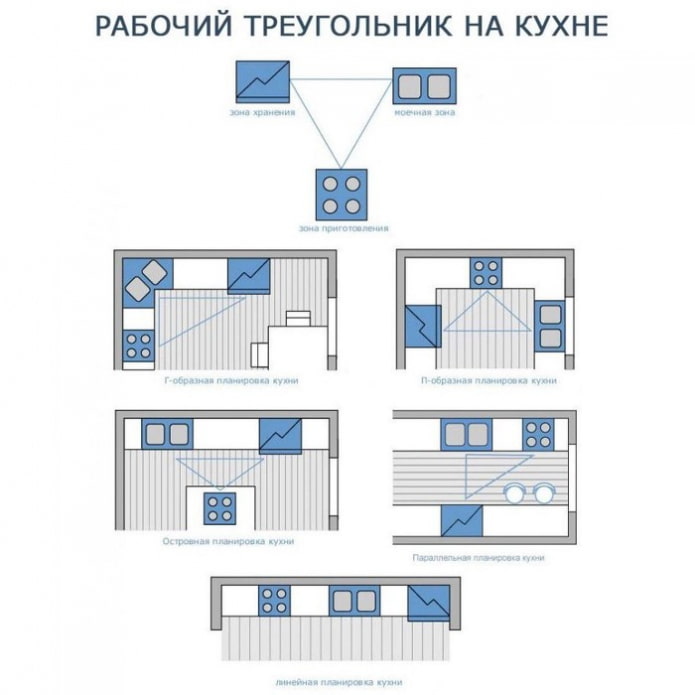

The photo shows a kitchen with low upper modules
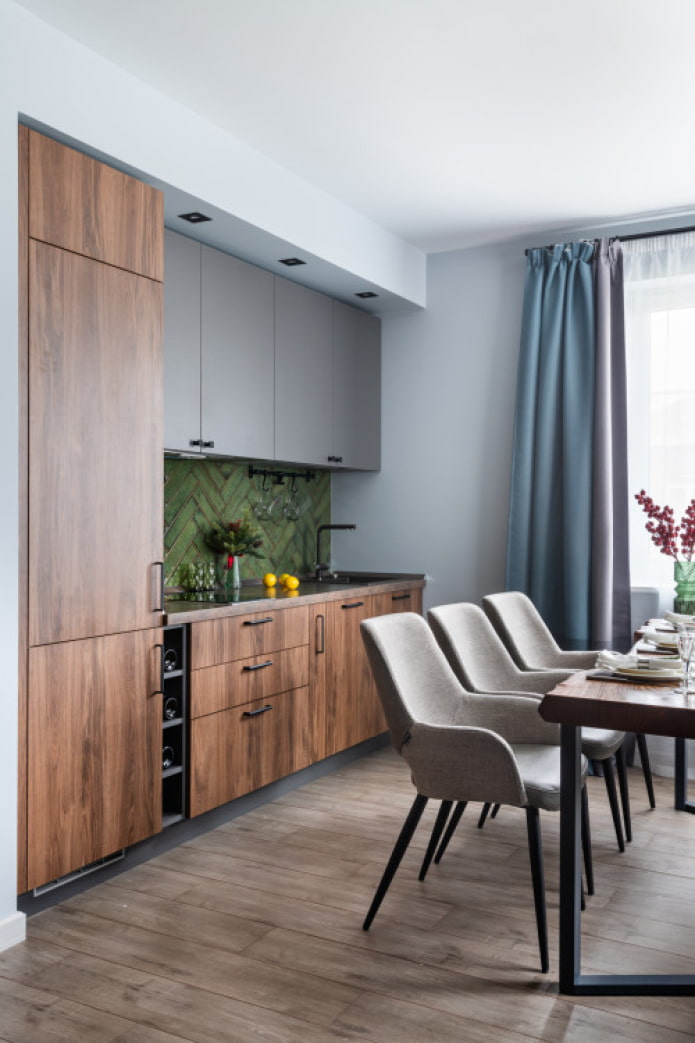
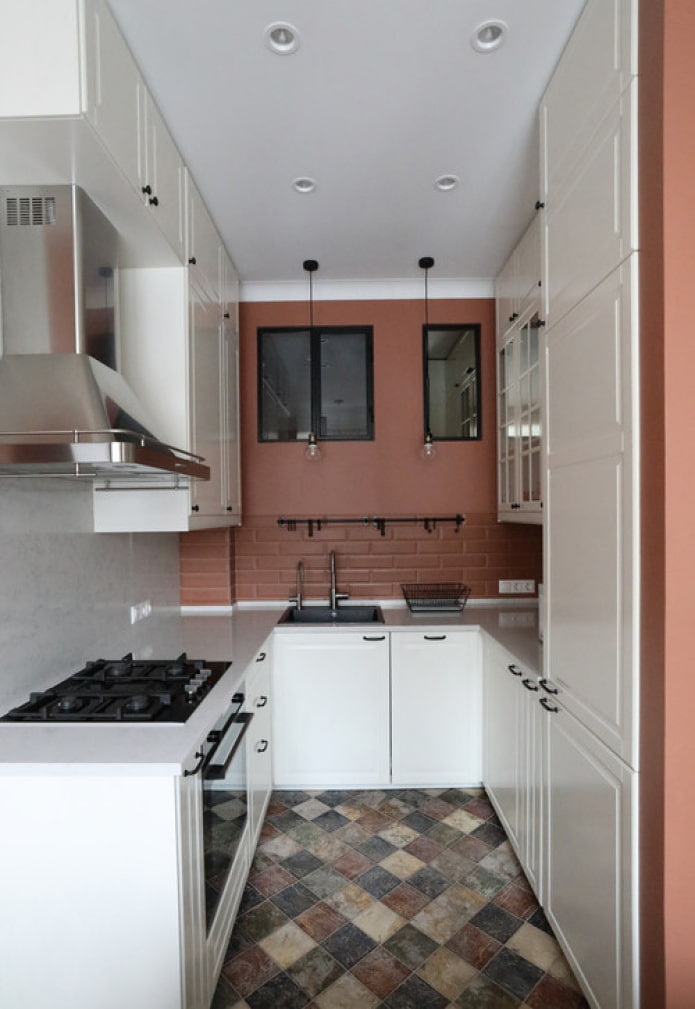
Corner. It is the easiest to implement kitchen ergonomics on it. The sink area is pushed into the corner or near it, the remaining vertices will be located on both sides. For more comfort, order a beveled corner module.
U-shaped. The most spacious, functional option. A sink is installed in the center, a refrigerator and a hob on the sides. The main thing is that the perimeter of the working triangle does not exceed 9 m.
Island. Any of the previous furniture arrangements can be improved with an island. It is useful for reducing the distance between the vertices in a large space or for pumping up a straight set. The easiest way to place a hob is in an additional module; it does not require any communications.

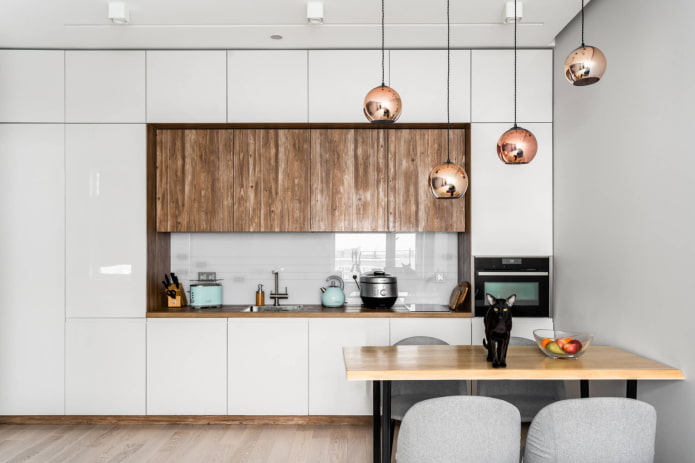
Distributing storage systems wisely
Ergonomics is not only stylish design and proper kitchen layout, but also logically organized storage. According to the horizontal zoning system, there are 4 zones:
- Very low (up to 40 cm above the floor). Poor visibility, requires bending or squatting to get the desired item. Rarely used items are stored here – dishes, food supplies.
- Low (40-75). You will have to bend over to get something. Suitable for storing large dishes, small appliances.
- Medium (75-190). The most convenient, visible space at eye and arm level. It is logical to place here what you use most often: utensils, dishes, food, cutlery.
- High (190+ cm). It should be easy to pull out or put the item in place, because you will have to use a chair or stepladder. Store unbreakable lightweight items.


The photo shows a storage area in a niche in the kitchen
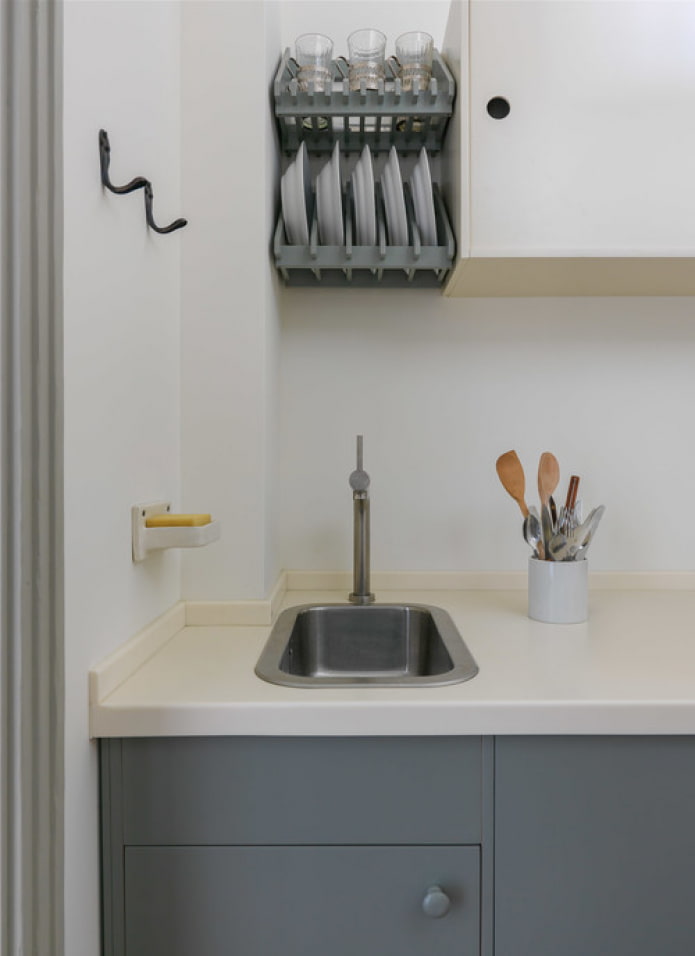

Storage areas should also be divided into zones based on the functionality of the kitchen:
- Dishes and utensils for cooking, seasonings, and cereals are left near the stove.
- A drying cabinet, a drawer for cutlery, detergents, and sponges are near the sink.
- Knives, boards, and bowls will be needed in the work area.
Tip: If possible, unload the countertop as much as possible by putting everything you need in cabinets or raising it onto the apron. For this purpose, modern interiors use a system of rails or additional shelves.
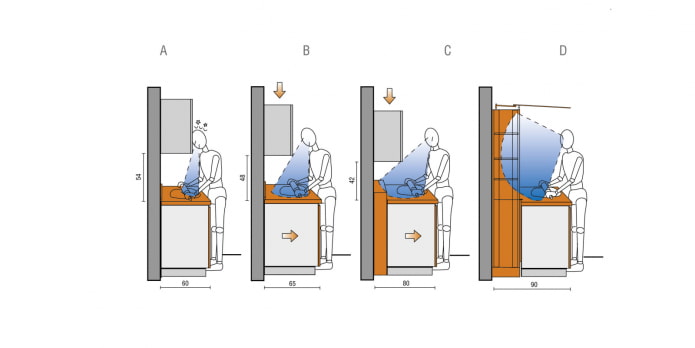
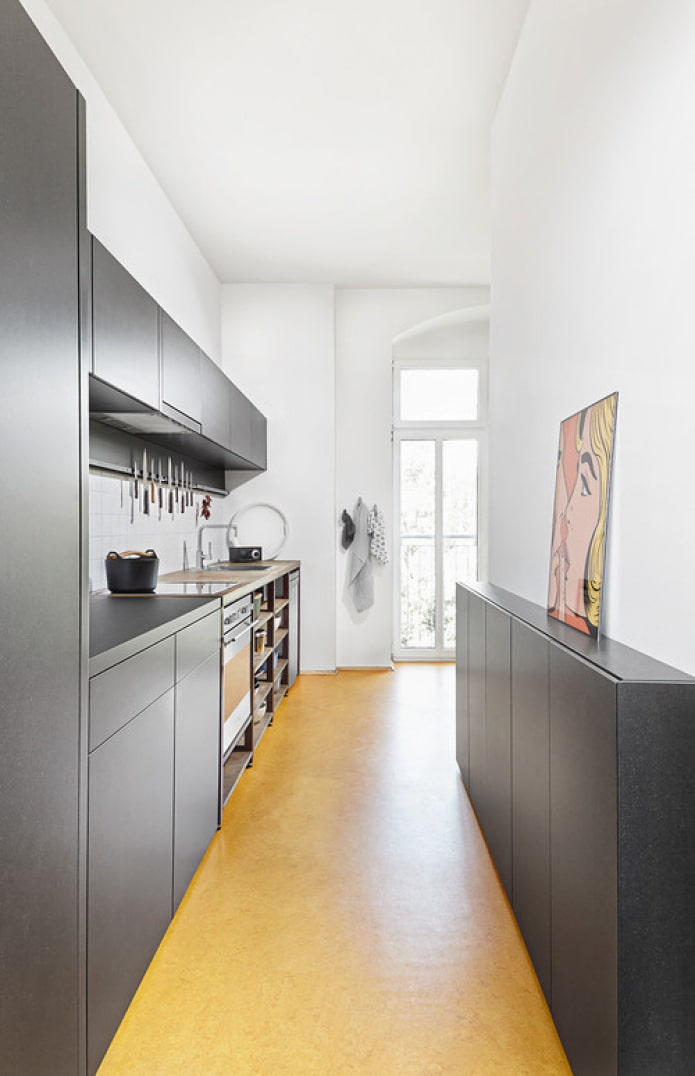

Lighting nuances and socket locations
Any lamp in the apartment is general, accent or decorative depending on the location and brightness. According to the rules of kitchen ergonomics, only one of the proposed options will not be enough for you.
- General light in the kitchen comes from a ceiling chandelier, which has recently been often replaced with several small spotlights or directional spotlights. It is not necessary to hang the lamp strictly in the center or place spotlights around the entire perimeter – it is enough to highlight each zone separately. A pendant lamp is better suited for a dining room, and directional light for a work area.
- Accent lighting is used above the work surface and is additional for comfortable cooking. This type of lighting can be placed under the bottom of wall cabinets, in the gap between them and the apron, on the wall in the form of sconces or adjustable lamps, on the ceiling (if you have a kitchen without upper cabinets).
- Use decorative lighting in the kitchen as desired, for example, to emphasize a textured wall or create an intimate atmosphere.
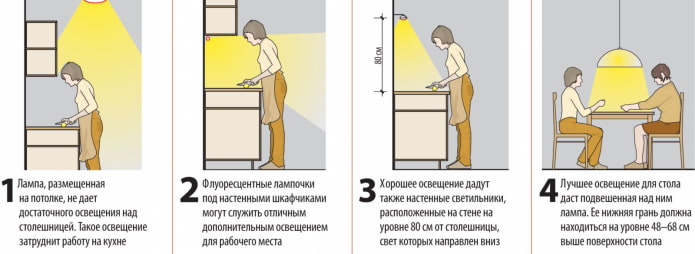
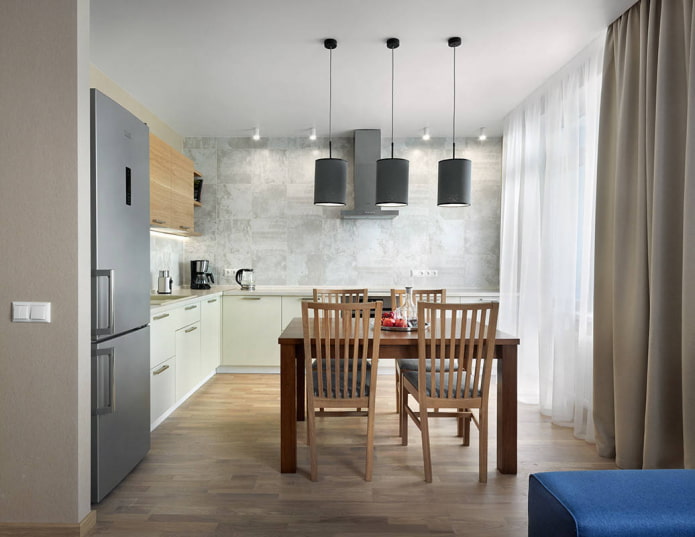
The photo shows an L-shaped kitchen with a refrigerator at the entrance
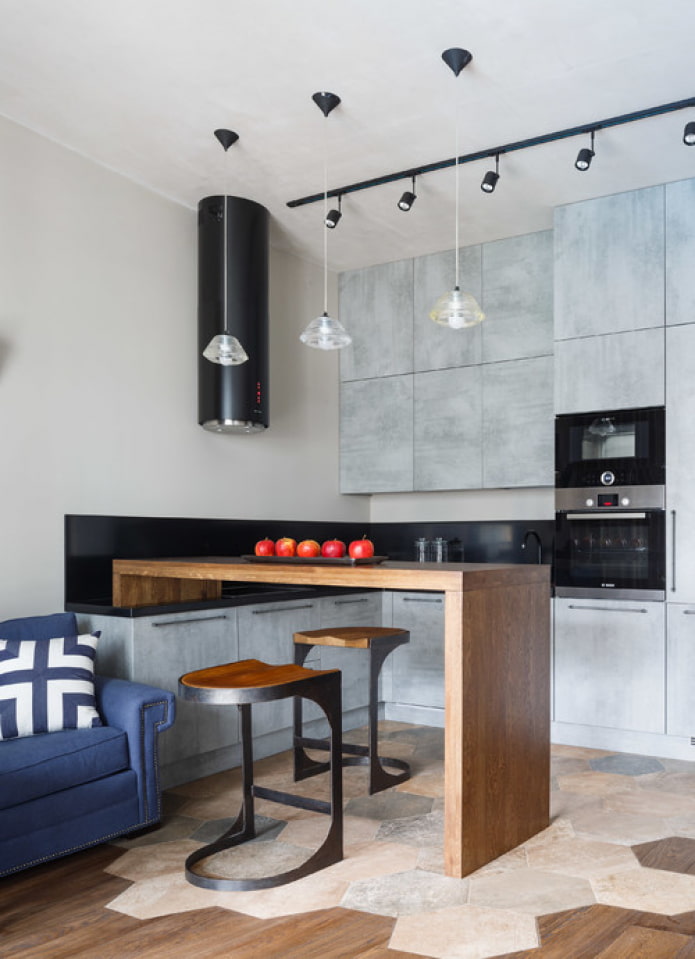
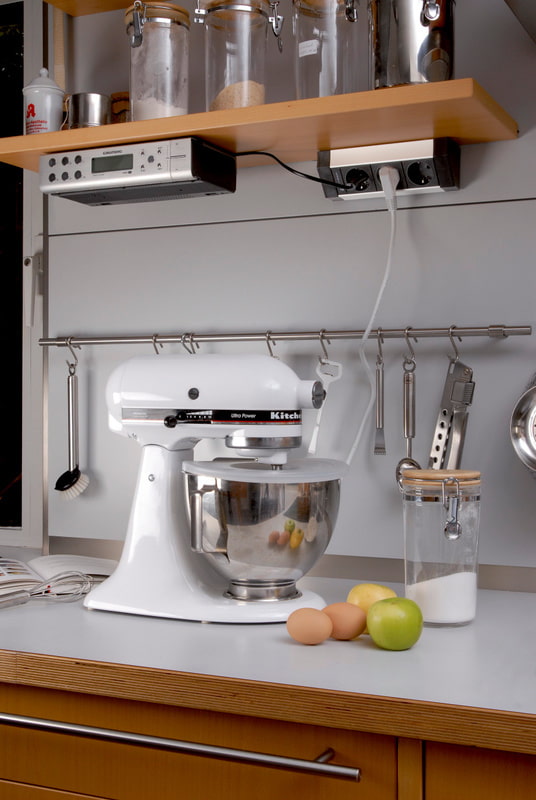
The ergonomics of the kitchen is directly affected by the number and placement of sockets. Everyone has long known that the more of them, the better. At the same time, you can’t place sockets anywhere, they should be located where you will use the equipment.
Even at the kitchen planning stage, determine their exact location and quantity (adding a couple in reserve). It is better to hide the holes for the plug of the refrigerator, stove, dishwasher and other large household appliances behind pull-out drawers – this way they will remain unnoticeable, and you will have access at any time.
For small ones, on the contrary, you will need to place them in a visible place in the kitchen work area. The classic version in the apron can be replaced with models built into the countertop or attached to the bottom of the shelf/cabinet.

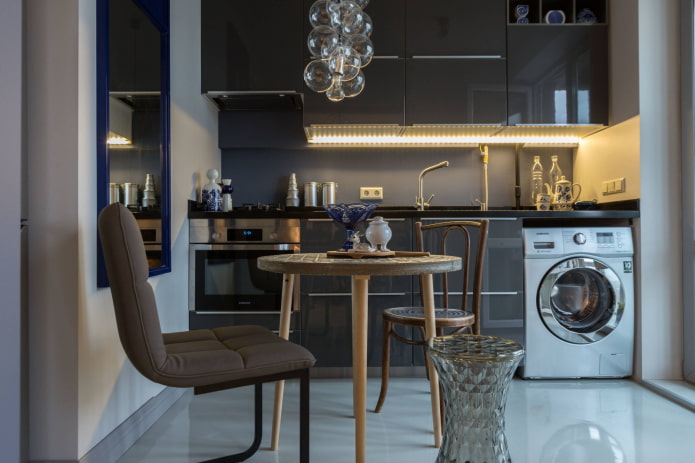
The photo shows additional lighting for the kitchen countertop
Don’t forget about safety
A convenient kitchen cannot be dangerous a priori, protect yourself:
- Hang the upper modules taking into account the height of the household members. The taller the hostess, the higher they should be.
- Buy upper cabinets 15-20 cm narrower than lower ones, make additional ledges on the lower tier for ease of cooking in the kitchen.
- Order upward-opening doors for the ergonomics of the upper row, to avoid hitting the open facade.
- Move the stove away from the passage and door, minimizing the possibility of touching hot dishes.
- Move the gas stove 40 centimeters from the sink, 45 from the window.
- Make sure that all doors open freely, leaving a meter of free space in front of them.
- Use a stable special stepladder in the kitchen instead of wobbly chairs to reach the top.
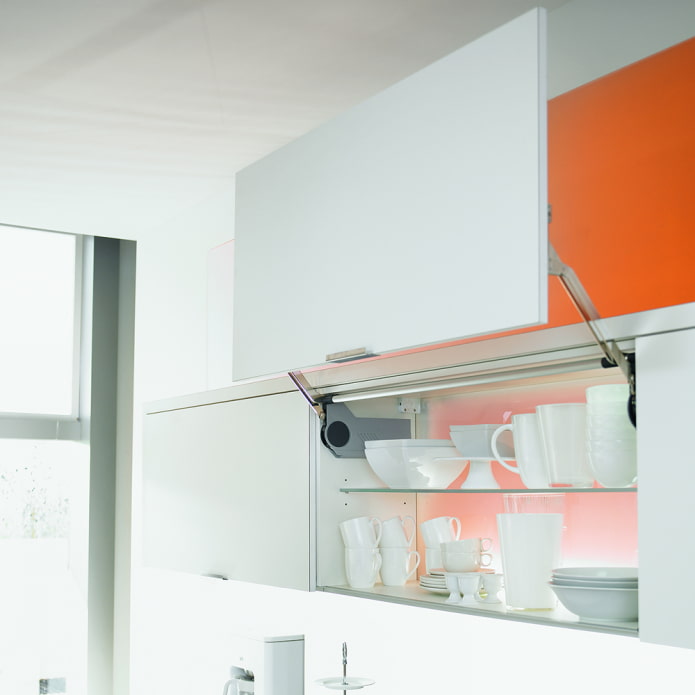
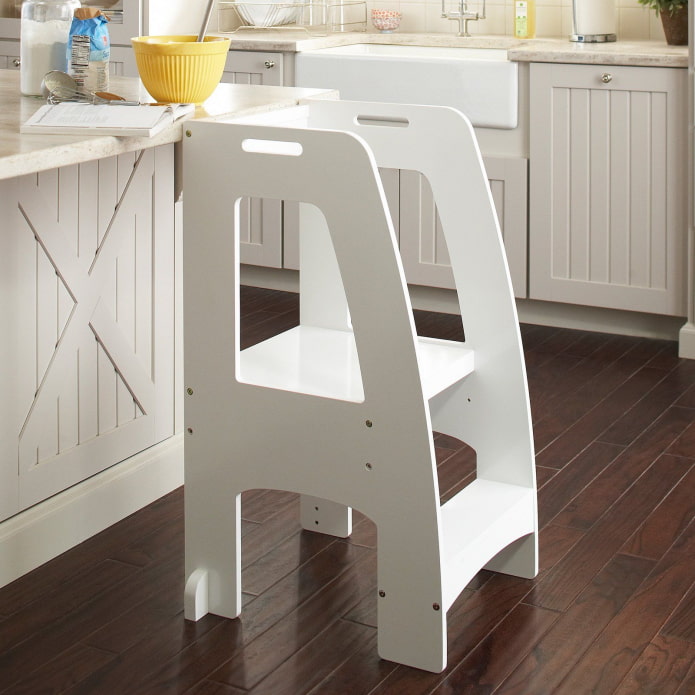
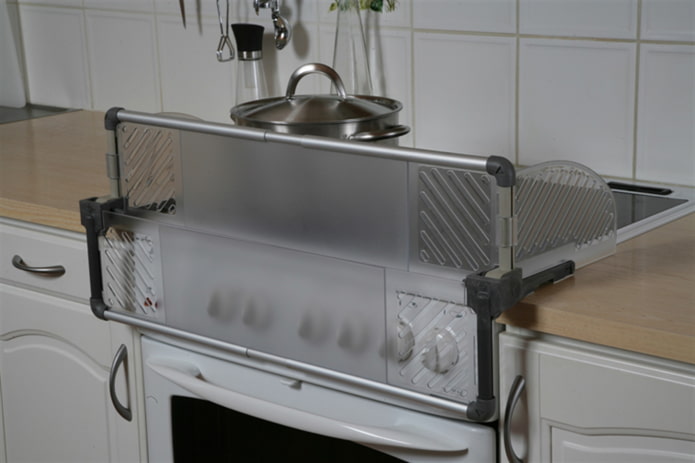
The photo shows a protective screen for children on the kitchen stove
What you need to know about equipment?
Kitchen ergonomics is inseparable from the correct placement of equipment. Let’s look at each detail:
Stove. Surprisingly, a 2-3 burner panel will be enough for 50% of families – by reducing the surface size, you will save space for the cooking area. Recently, the oven is often separated from the stove, placing it in a pencil case at eye level. This is convenient from an ergonomic point of view: it will be easier to monitor the cooking and take out the baking tray. Do not forget to provide a place next to the pencil case where you will put hot dishes.
Refrigerator. The main rule of ergonomics is to open the door towards the wall. That is, when opening it, you should have free access from the countertop. To make it take up less space, place it near the window, in the far corner, near the entrance to the kitchen, or in a niche.
Microwave oven. Place it near the refrigerator, because we often use the microwave for defrosting and reheating food. A comfortable height for ergonomics is 10-15 cm below the shoulders.
Dishwasher. It should be located close to the water supply (so that you don’t have to pull the utilities), the trash can (it’s convenient to throw away the leftovers) and the cupboard (you don’t have to run around the entire kitchen while unloading).
Washing machine. Also, do not remove it from water pipes and sewerage. But take care to exclude the transmission of vibrations to other equipment – that is, do not place it close to the dishwasher, refrigerator, oven.

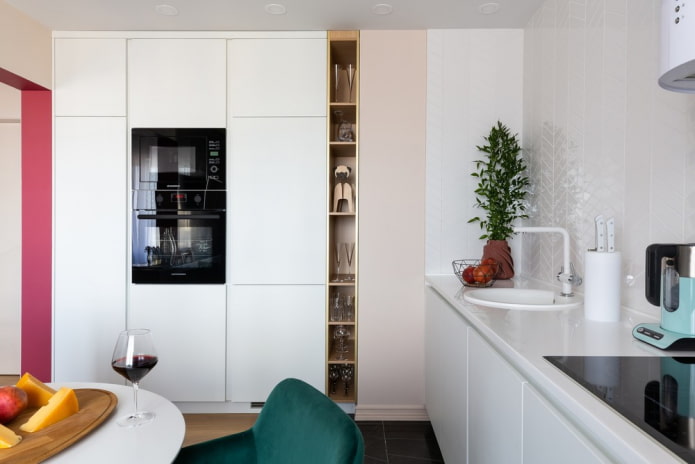
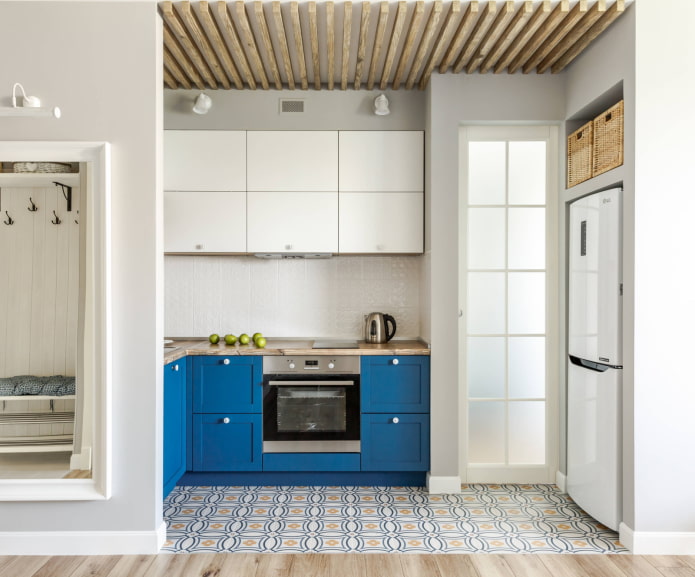
Now reading:
- Installing tiles on the ceiling: preparation stages and step-by-step instructions.
- 15 creative ideas for using the Kallax shelving unit from IKEA for any interior.
- Hyacinths: 21 photos and everything about the rules of care, forcing and planting flowers.
- stylish solutions for hiding a gas pipe in the kitchen without breaking the law.
- Hallway Design: 113 Images for Interior Inspiration